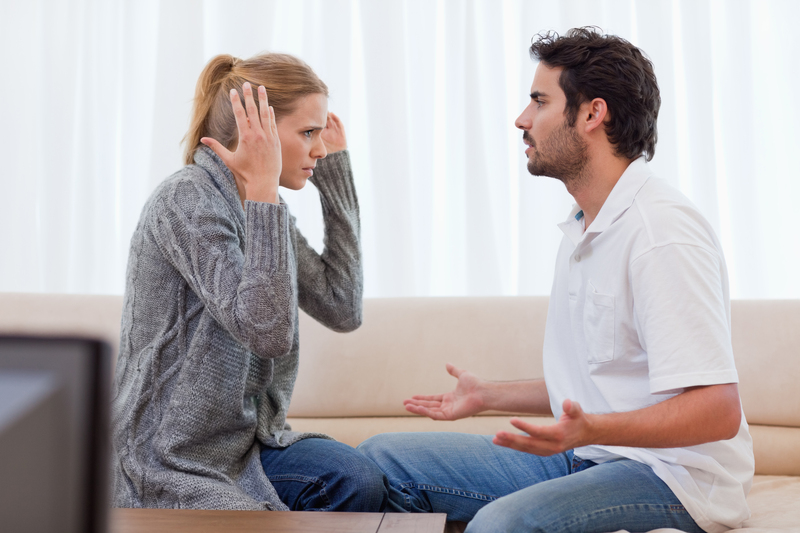Avoid Disaster: The Risks of DIY Piano Moving
Posted on 21/05/2025
Avoid Disaster: The Risks of DIY Piano Moving
Moving a piano is much more than just a typical furniture relocation. These beautiful, intricate instruments are not only heavy and unwieldy but also highly sensitive to movement, humidity, and improper handling. If you're considering moving a piano on your own, it's important to fully understand the numerous risks and challenges involved. In this article, we'll explore the dangers of DIY piano moving, why professional assistance matters, and how you can avoid costly mistakes.

Why Pianos Are Especially Difficult to Move
The risks of moving a piano yourself are vastly underestimated. Pianos are unlike ordinary furniture:
- Weight: Even small upright pianos can weigh up to 300-500 pounds, while grand pianos can exceed 1,000 pounds.
- Center of Gravity: Pianos are awkwardly shaped with a high center of gravity, making them difficult to stabilize and balance.
- Delicate Inner Workings: Inside a piano are thousands of movable parts, strings under immense tension, and fragile components that are easily damaged.
- Size and Bulk: Getting a piano through doorways, up stairs, or around tight corners often requires special tools and strategies.
All these factors make piano moving a specialized task that requires both experience and equipment. If underestimated, the risks of damage and injury escalate significantly.
The Dangers of Attempting DIY Piano Moving
1. Personal Injury
Attempting a DIY piano move poses serious threats to your health. The sheer weight and unwieldy nature of the instrument puts you and your helpers at risk. Here's how:
- Back Injuries: Incorrect lifting technique can cause strains or permanent damage to your back and limbs.
- Cr crushed Fingers & Toes: If the piano slips or drops, hands and feet are common casualties.
- Trips and Falls: Poor visibility and awkward positions increase the likelihood of trips, especially on stairs or uneven surfaces.
- Hernias: Sudden strain from moving heavy objects can lead to painful hernias that require medical attention.
In many reported incidents, well-meaning individuals ended up needing emergency care simply because they underestimated the complexity of moving a piano.
2. Damage to Your Piano
Pianos are precision instruments. Even small jolts or bumps can cause serious issues:
- Tuning Instability: Improper moving can put a piano out of tune, requiring professional re-tuning or even repairs.
- Structural Damage: Dropping, tipping, or scraping the case can cause cracks, broken legs, or irreparable injury to the frame.
- Internal Mechanism Issues: The action (keys, hammers, and strings) is easily thrown out of adjustment or even broken by rough handling.
A damaged piano often loses its tone, value, and functionality. Restoring a mismanaged instrument can cost hundreds or even thousands of dollars, often exceeding the price of professional piano moving services.
3. Property Damage
Not only can you harm the instrument or yourself, but your home is also at risk during a DIY piano relocation:
- Scuffed Floors and Carpets: Heavy pianos scratch hardwood and crush carpet fibers if not properly handled.
- Broken Railings and Trim: Navigating stairs and tight corners can lead to scraped paint, cracked drywall, or broken fixtures.
- Wall and Doorframe Dents: Poor maneuvering almost guarantees marks, holes, or even structural damage to your property.
Once a heavy piano is in motion, it's difficult to stop. *Mitigating these risks requires professional-grade equipment and experience.*
Common Mistakes in DIY Piano Moving
The most critical mistakes made by non-professional movers include:
- Insufficient Manpower: Underestimating the weight, many try to move a piano with just 2 or 3 people (instead of the recommended 4+).
- Lack of Safety Equipment: Not using moving straps, skid boards, or proper padding increases the danger for everyone involved.
- Poor Planning: Failing to measure doorways, stairs, and paths ahead of time leads to dangerous improvisation mid-move.
- No Disassembly: Some piano moves require removing legs, pedals, or music stands; amateurs often skip this critical step.
- Inadequate Vehicle: Using the wrong vehicle or failing to secure the piano can lead to disaster during transport.
The Case for Professional Piano Movers
Professional piano movers are trained not just in heavy lifting, but specifically in the safe handling and transport of pianos. There are several reasons why entrusting your valuable instrument to them is wise:
Specialized Equipment
Experts use equipment designed for pianos:
- Piano dollies and skid boards for safe maneuvering
- Straps, ramps, and padding to protect the instrument and property
- Heavy-duty trucks with secure tie-downs
Trained Teams
Piano movers operate in coordinated teams with protocols for every stage -- from disassembly to secure reassembly. They understand weight distribution, leverage, and how best to navigate tricky spaces.
Insurance Coverage
If you damage a piano or your property during a DIY move, you cover the costs. Professional movers carry insurance for both the piano and your home, giving you peace of mind.
Time and Stress Savings
Hiring specialists means you avoid the exhaustion and anxiety of managing the move yourself. They work efficiently, letting you focus on what matters.
The Hidden Costs of DIY Piano Moving
Many people opt for DIY piano moving to save money. However, the real costs can quickly outstrip any savings:
- Medical Bills: Treating injuries can be extremely expensive, especially if surgery or physical therapy is needed.
- Piano Repairs: Broken pedals, cracked soundboards, or knocked-out keys can result in repair costs that far exceed the price of professional help.
- Home Repairs: Fixing scratched floors, busted walls, or damaged stairs adds unexpected expenses.
- Time Off Work: Injuries may require time off, and even without injury, a DIY move takes much longer than a professional one.
These hidden risks of DIY piano relocation add up and are not worth the potential disaster.
What Experienced Piano Movers Do Differently
Here's how professionals prevent disaster and ensure safe, effective piano moves:
- Pre-move Assessment: Before beginning, experts inspect both the instrument and the moving environment to identify any challenges.
- Disassembly and Protection: Movers often remove components (legs, pedals, lids) and wrap everything in thick pads to prevent scratches or breaks.
- Secure Handling: Using proper lifting techniques and team coordination, professionals ensure safe transitions over stairs, curb, or ramps.
- Steady Transport: Pianos are strapped securely inside trucks designed for their safe transport, avoiding shocks and sudden movements.
- Reassembly and Placement: At the new location, the team carefully unloads, reassembles, and positions your piano exactly where you want it.
Piano Moving: Safety Tips for Homeowners
If you still wish to proceed with moving a piano yourself, consider these crucial safety measures:
- Gather Enough Helpers: Four or more strong adults are usually required, depending on the size of the piano.
- Use the Right Tools: Rent professional-grade dollies, moving straps, and plenty of protective blankets.
- Measure Everything: Double-check all doorways, staircases, and paths for proper clearance.
- Protect the Path: Lay down plywood or strong mats to shield floors and provide traction.
- Go Slow and Communicate: Move in small, controlled steps and keep communication clear between everyone involved.
- Never Move Alone: Never attempt to move a piano by yourself -- the risks are simply too great.
However, no matter how careful you are, the risks of DIY piano moving remain significant. When in doubt, professional piano movers are always the safest solution.

Frequently Asked Questions About Piano Moving Risks
Can I move an upright piano by myself?
No. Even the smallest upright pianos require at least two strong people and highly specialized equipment. Solo moving is extremely dangerous and should never be attempted.
Are there special piano moving companies?
Yes, there are companies whose entire focus is the safe relocation of pianos. They typically have years of experience, proper licensing, and insurance.
Will my piano definitely get damaged if I move it myself?
*While some amateur moves go without major issues, the risk of damage is high. Any mishap can result in expensive repairs or irreparable harm to the instrument's sound and structure.*
Do I need to re-tune my piano after moving it?
Yes, even the best move can cause a piano to go out of tune due to vibration and temperature/humidity fluctuations. Regardless of who moves it, always schedule a professional tuning after relocation.
Conclusion: Protect Your Piano and Peace of Mind
Your piano is a valuable investment and a cherished part of your home. *Avoid the disaster of injury, costly repairs, and ruined instruments that often accompany DIY piano moving.* By choosing professional movers, you ensure your piano arrives safely, in perfect condition, and without the stress and hazards of doing it yourself.
Don't risk disaster with do-it-yourself piano moving. Instead, enjoy your instrument for years to come by letting trusted professionals handle the heavy lifting. The peace of mind and protection for your family, your home, and your piano is well worth the investment.





